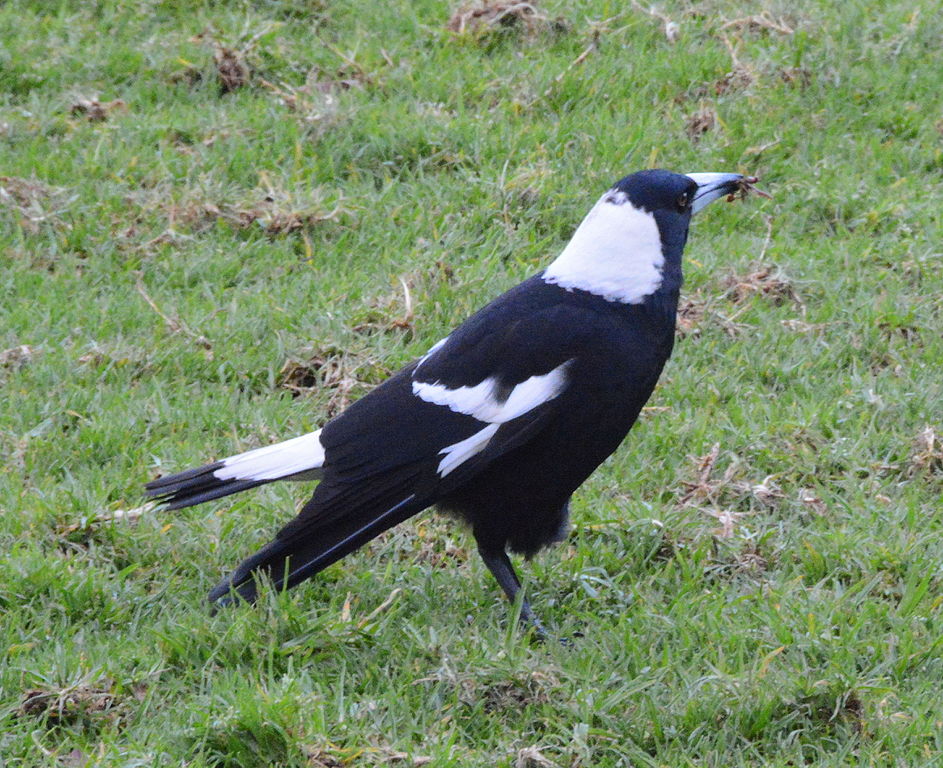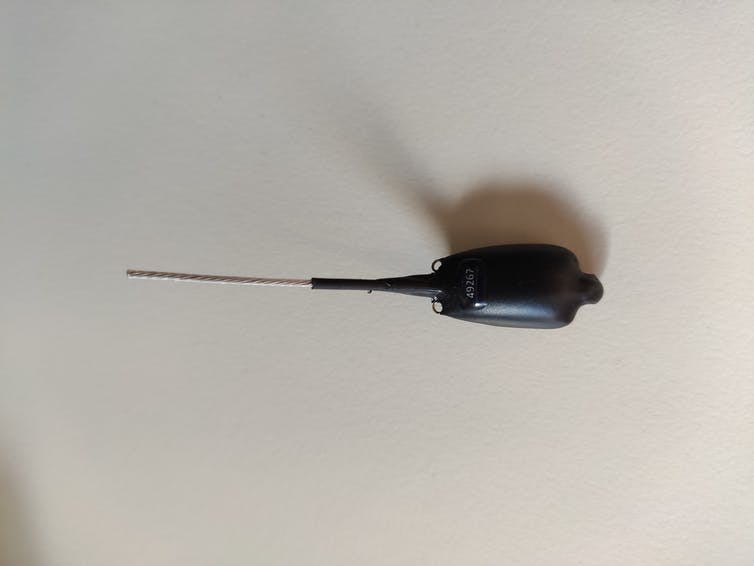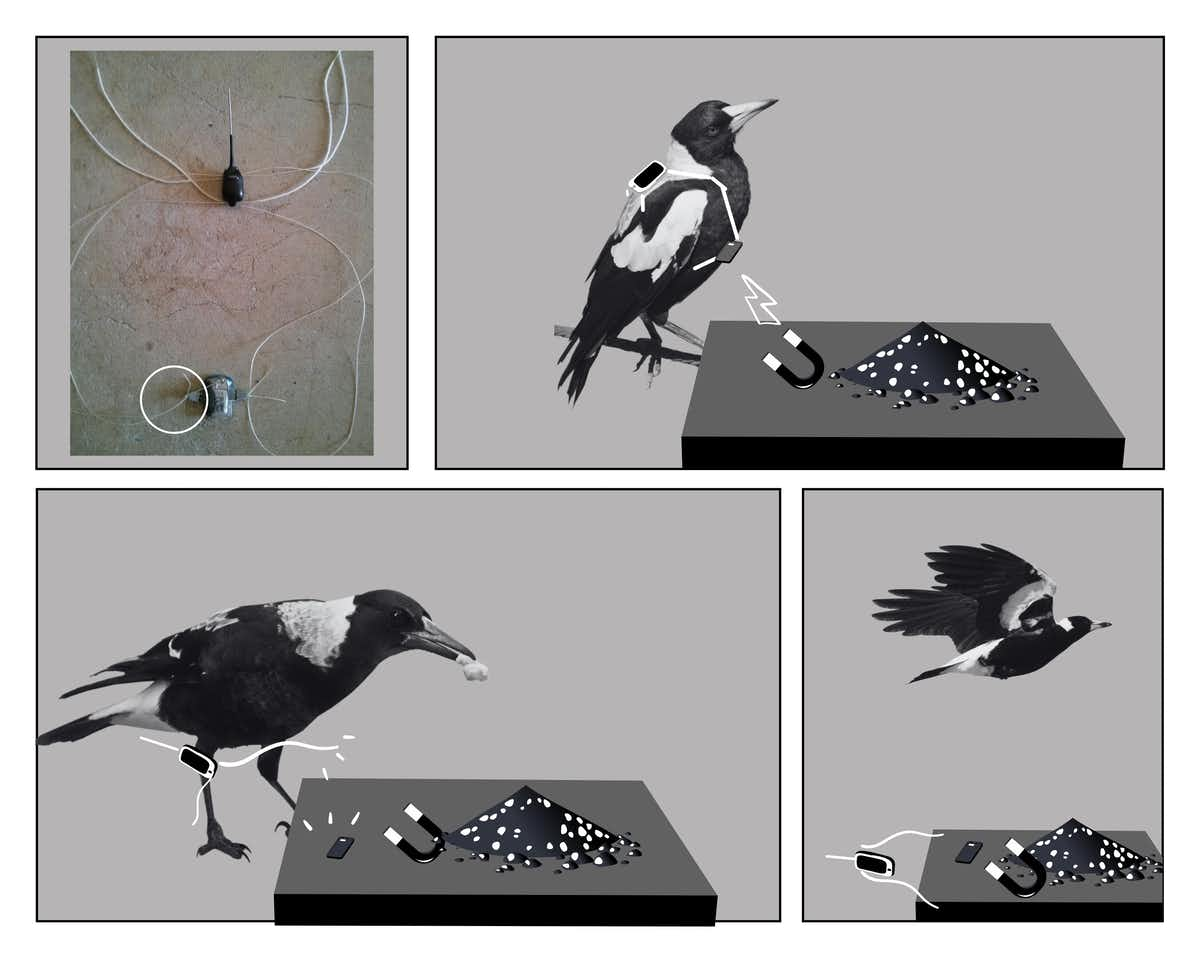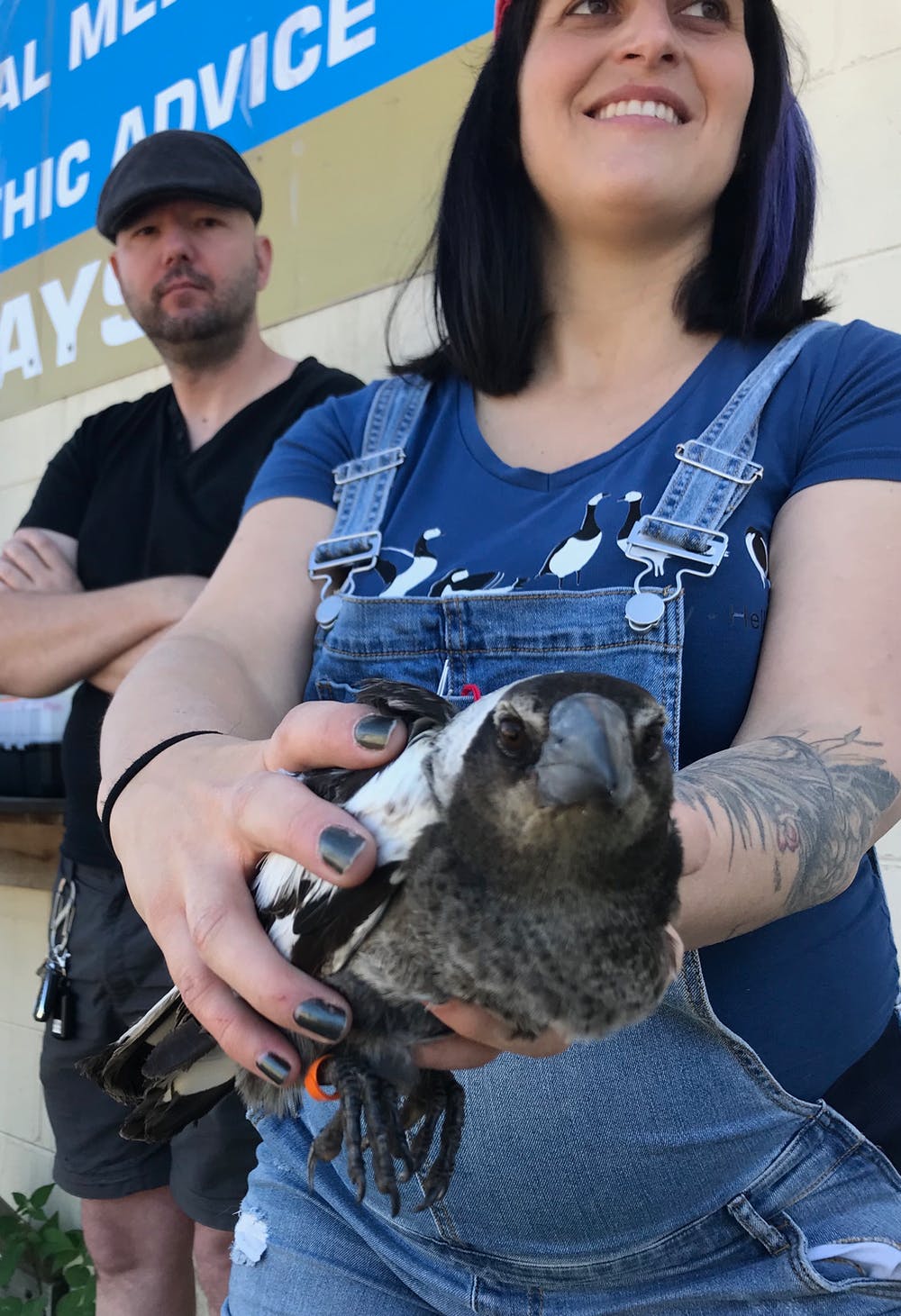Queensland, Australia —(Map)
Science experiments don’t always go as planned, but that doesn’t mean you can’t learn from them. Recently, Australian scientists learned something unexpected about magpies when they tried to attach trackers to them to learn more about their habits.
The birds the scientists hoped to study were Australian magpies. They’re medium-sized black and white birds from the same bird “family” as crows and bluejays. They are known to be quite clever. They live in groups of up to 12 birds and work together to defend the area they live in.

(Source: Sardaka [CC BY-SA 3.0], via Wikimedia Commons.)
The researchers were eager to try a new tracker on the magpies. They hoped to learn more about how far the birds flew and what they did during a normal day. The scientists are concerned that magpies may have a hard time adjusting as the world warms up because of climate change.
It’s hard to find trackers that work well with small and medium-sized birds. Either the trackers are too heavy, or don’t last long enough. The new trackers were light and could be recharged without wires while they were still on the birds.

(Source: Dominique Potvin [CC BY-ND 4.0], via The Conversation.)
To keep the trackers on the birds without causing flying problems, the researchers developed a special harness. It was tough, so it wouldn’t come off by accident. But it had a special release controlled by magnets. This was meant to allow the scientists to free the birds from the harnesses at a special magnetic bird feeder, without having to catch the birds again.
There was just one problem – the birds didn’t like the trackers.

(Source: Dominique Potvin [CC BY-ND 4.0], via The Conversation.)
The researchers placed trackers on five magpies using their special harnesses. But just ten minutes after setting up the last magpie, they noticed something unusual: an adult female magpie was helping another magpie get free from its harness.
In a few hours, most of the other magpies had also been freed from their harnesses. By the third day, none of the birds had trackers anymore. “The birds outsmarted us,” said Dominique Potvin, one of the scientists.
The scientists were disappointed about the trackers, but they realized that the magpies had taught them something else: that magpies are able and willing to help each other out, even if the bird who is helping doesn’t get a reward.

(Source: Dominique Potvin [CC BY-ND 4.0], via The Conversation.)
This is called “rescue behavior”, and it’s not that common in the animal world, especially among birds. The researchers think this is the first time rescue behavior has been reported for Australian magpies.
The scientists think the birds might have thought the trackers were parasites (like ticks on a dog, for example). They don’t know how the magpies solved the difficult problem of getting the harness off. They also don’t know if it was just one magpie or several who removed the harnesses.
The researchers are glad they’ve learned about the rescue behavior of magpies. But now they need to try again to figure out a good way to track these clever birds.
😕
This map has not been loaded because of your cookie choices. To view the content, you can accept 'Non-necessary' cookies.
